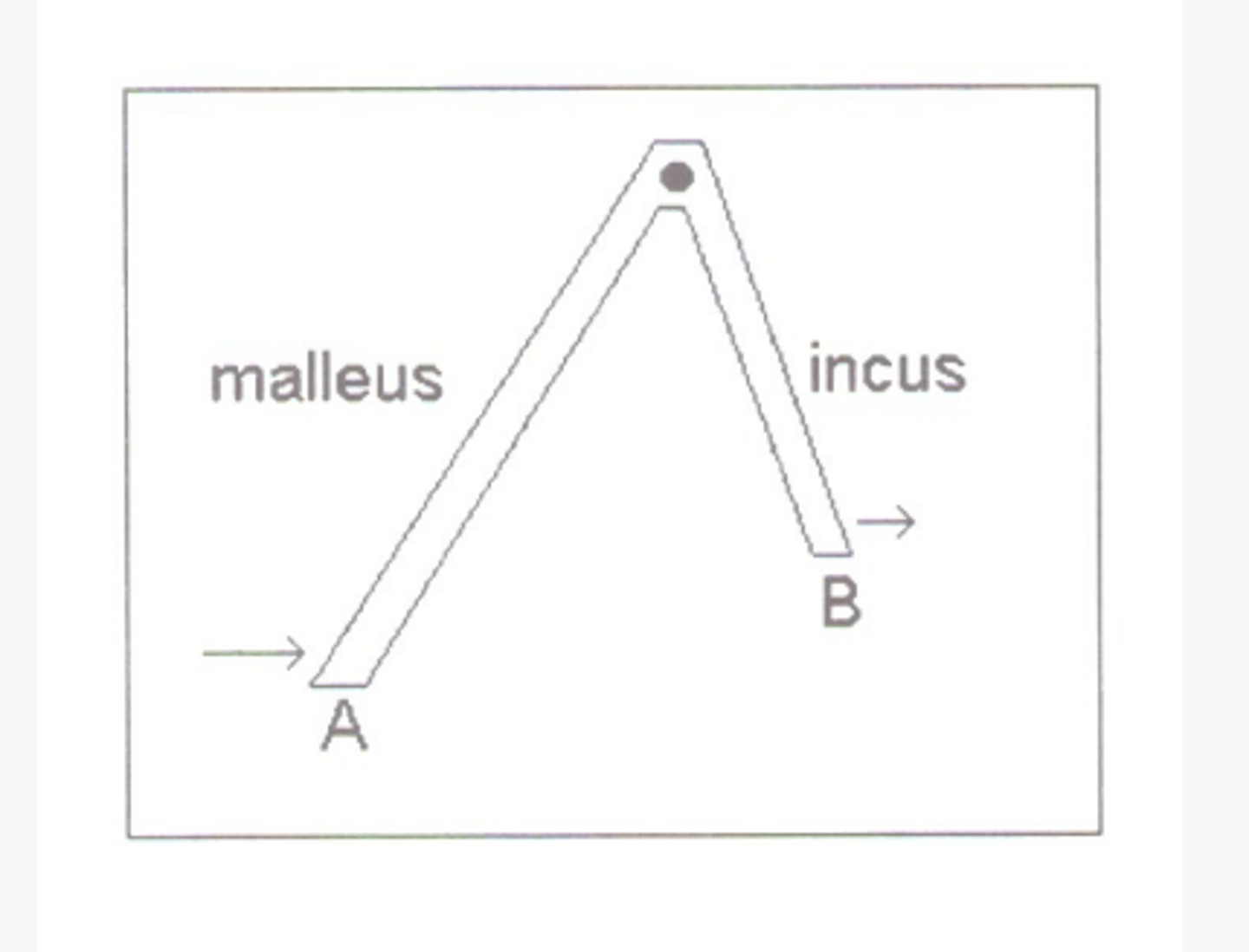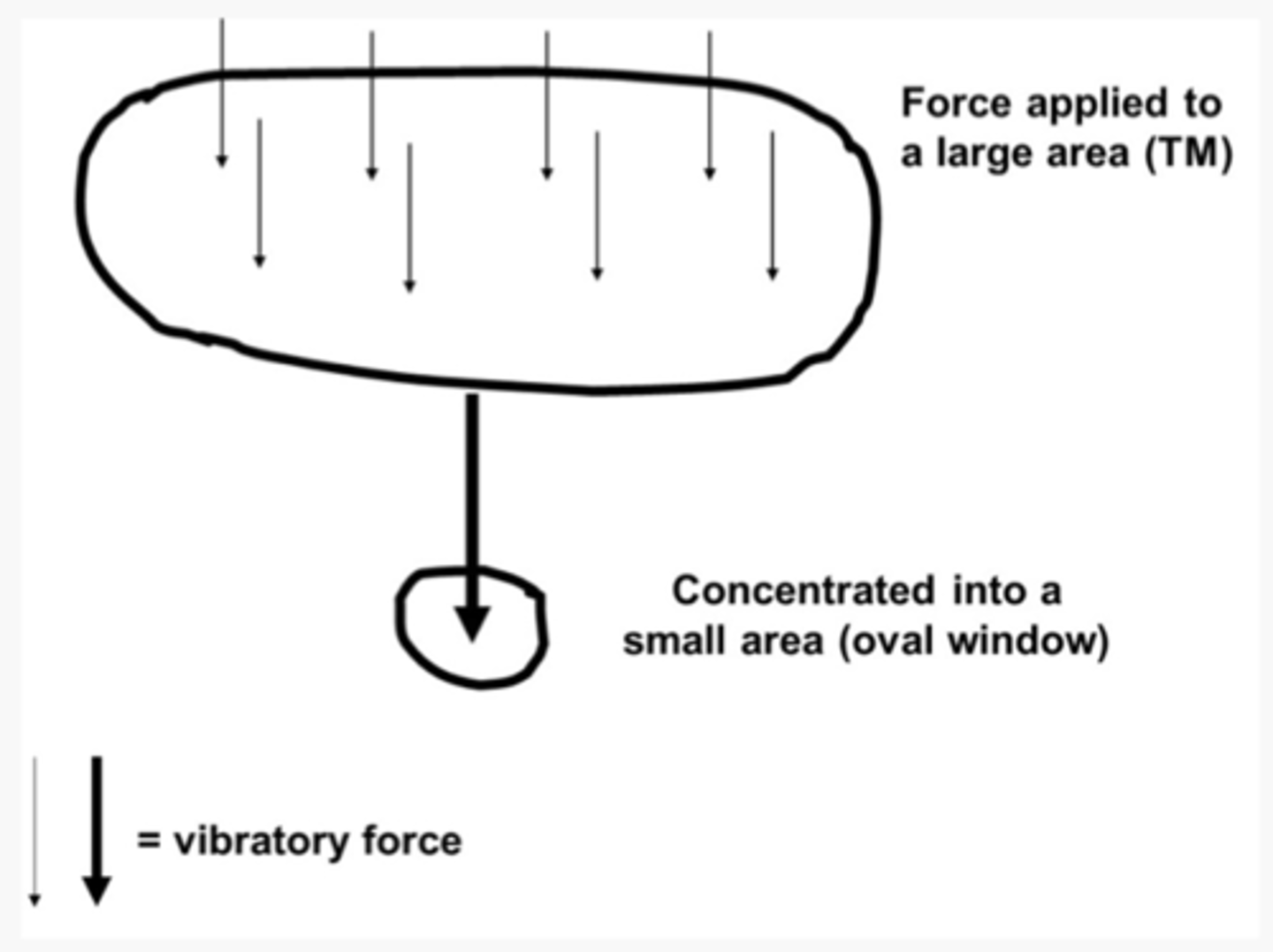Hearing Science: Middle Ear Physiology
1/26
There's no tags or description
Looks like no tags are added yet.
Name | Mastery | Learn | Test | Matching | Spaced |
|---|
No study sessions yet.
27 Terms
What are the four middle ear contributions to hearing?
Impedance
Polarization Function
Ventilation and Pressurization
Protection and Distortion Reduction
What is each middle ear contribution designed to do?
solve a problem
Impedance
to the flow of energy (difference for air vs. fluid)
What problem is the middle ear impedance matching transformer function trying to solve?
impedance mismatch between the outer ear and inner ear
When does impedance mismatch between the outer and inner ear occur?
when sound is transmitted from air to water
What would happen if the middle ear structures were not in place?
sound would not be efficiently transmitted to the fluid filled cochlea
What hearing loss would occur if the middle ear structures were missing?
approximately 30 dB
The middle ear is...
a mechanical device that amplifies sound
What are the two transformer mechanisms?
Lever mechanism
Areal ratio of the TM to the oval window
Lever Mechanism
the increase in force will be proportional to the ratio of the two lengths (length of the malleus and incus)

How long is the malleus?
1.3x as long as the incus
Pressure at the incus will be _____ as great as the force applied to the malleus
1.3x
Theoretically
What is the missing piece of information?
the gain across frequencies
Areal Ratio Mechanism
energy collected over a relatively large surface is transmitted to a smaller surface

How is the energy directed?
the force applied to a large area (TM) is concentrated into a small area (oval window)
The pressure at the stapes footplate is _________ than that at the tympanic membrane.
greater
What did the Aibara et. al study do in 2001?
measured the middle ear sound transfer function for 12 fresh temporal bones
Where was the sound pressure level measured?
near the TM
How was the sound pressure in the scala vestibuli measured?
using a hydrophone
Hydrophone
microphone for recording underwater sound
What is the max gain when comparing the sound level in the middle ear to the sound level in the inner ear?
23.5 dB at 1.2 kHz
What does the y-axis represent?
the gain provided by the middle ear
-GME: middle ear gain)
How do you determine gain?
Why do we need the middle ear to provide gain?
gain = amplified soun
we need to amplify it because there is a problem with the amplification of sound from air to fluid (ear canal to cochlea)
What is the difference between ear canal resonance vs. middle ear resonance?
Ear Canal Resonance: how to amplify high frequency sounds
Middle Ear Transfer Function: how to amplify low frequency sounds
What is the max gain when comparing the sound level of the air around us to the sound level within the outer ear (ear canal resonance)?
16 dB at 2.8 kHz